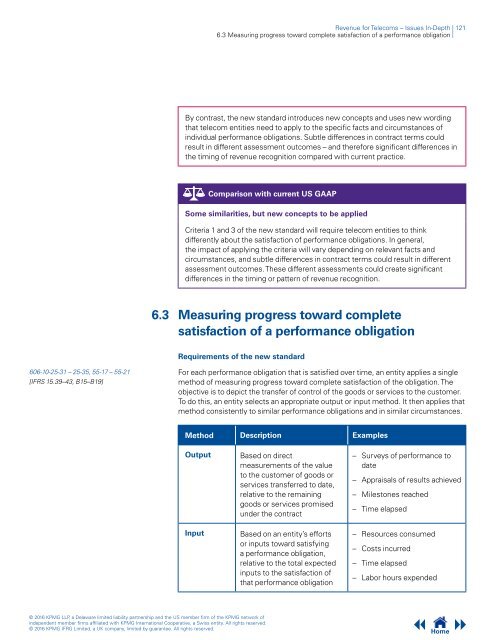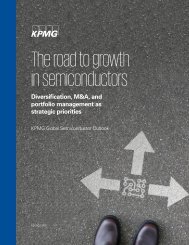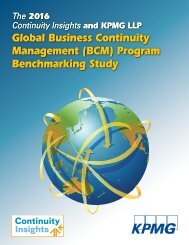Revenue for Telecoms
2cdncba
2cdncba
Create successful ePaper yourself
Turn your PDF publications into a flip-book with our unique Google optimized e-Paper software.
<strong>Revenue</strong> <strong>for</strong> <strong>Telecoms</strong> – Issues In-Depth | 121<br />
6.3 Measuring progress toward complete satisfaction of a per<strong>for</strong>mance obligation |<br />
By contrast, the new standard introduces new concepts and uses new wording<br />
that telecom entities need to apply to the specific facts and circumstances of<br />
individual per<strong>for</strong>mance obligations. Subtle differences in contract terms could<br />
result in different assessment outcomes – and there<strong>for</strong>e significant differences in<br />
the timing of revenue recognition compared with current practice.<br />
Comparison with current US GAAP<br />
Some similarities, but new concepts to be applied<br />
Criteria 1 and 3 of the new standard will require telecom entities to think<br />
differently about the satisfaction of per<strong>for</strong>mance obligations. In general,<br />
the impact of applying the criteria will vary depending on relevant facts and<br />
circumstances, and subtle differences in contract terms could result in different<br />
assessment outcomes. These different assessments could create significant<br />
differences in the timing or pattern of revenue recognition.<br />
6.3 Measuring progress toward complete<br />
satisfaction of a per<strong>for</strong>mance obligation<br />
Requirements of the new standard<br />
606-10-25-31 – 25-35, 55-17 – 55-21<br />
[IFRS 15.39–43, B15–B19]<br />
For each per<strong>for</strong>mance obligation that is satisfied over time, an entity applies a single<br />
method of measuring progress toward complete satisfaction of the obligation. The<br />
objective is to depict the transfer of control of the goods or services to the customer.<br />
To do this, an entity selects an appropriate output or input method. It then applies that<br />
method consistently to similar per<strong>for</strong>mance obligations and in similar circumstances.<br />
Method Description Examples<br />
Output<br />
Based on direct<br />
measurements of the value<br />
to the customer of goods or<br />
services transferred to date,<br />
relative to the remaining<br />
goods or services promised<br />
under the contract<br />
– Surveys of per<strong>for</strong>mance to<br />
date<br />
– Appraisals of results achieved<br />
– Milestones reached<br />
– Time elapsed<br />
Input<br />
Based on an entity’s ef<strong>for</strong>ts<br />
or inputs toward satisfying<br />
a per<strong>for</strong>mance obligation,<br />
relative to the total expected<br />
inputs to the satisfaction of<br />
that per<strong>for</strong>mance obligation<br />
– Resources consumed<br />
– Costs incurred<br />
– Time elapsed<br />
– Labor hours expended<br />
© 2016 KPMG LLP, a Delaware limited liability partnership and the US member firm of the KPMG network of<br />
independent member firms affiliated with KPMG International Cooperative, a Swiss entity. All rights reserved.<br />
© 2016 KPMG IFRG Limited, a UK company, limited by guarantee. All rights reserved.<br />
Home







